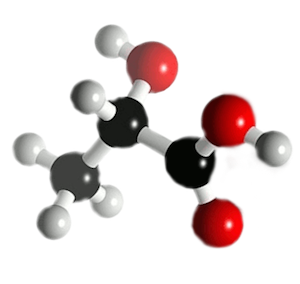
Since the 1960’s researchers have known that the connection between delayed onset muscle soreness (DOMS) and lactic acid is a myth.
Lactic acid is a continual product of carbohydrate metabolism. It holds a position as a temporary product at the end of glycolysis and at the head of the aerobic Krebs cycle. That’s a fancy way of saying that lactic acid is formed when sugar is broken down in your body and it’s produced whenever the body breaks down carbohydrates for energy. The lactic acid actually helps generate energy. Lactic acid is not a toxin. Then why does it get such a bad rap?
The very persistent belief that lactic acid creates longer term muscle soreness is just a myth. Keith Grant, PhD, 2007
Feeling the burn
Exercise stimulates the production of lactic acid which is widely known to be responsible for the “burn” feeling felt during intense exercise. It’s also sometimes blamed, incorrectly, for muscle soreness you might feel a day or so later. Lactic acid, in fact, is metabolized completely within about an hour after exercise.
During periods of intense training, the lactic acid “burn” can actually interfere with your workout and cause you to feel like you can’t push as hard as you’d like toward your fitness goals because the muscles ache. Luckily, most trainers and athletes know that combining high intensity, interval, and over-distance training helps more rapidly flush lactic acid from your system.
Nutrition is also important, strenuous training depletes glycogen reserves in the muscle and liver. That’s why high-carbohydrate diets are so important for anyone who are very active, from pro athletes to serious weekend warriors.
Does massage help?
While massage therapy does not significantly speed the removal of lactic acid from muscles after exercise, there are other benefits to massage after a workout, such as lowering stress and anxiety, returning range of motion and promoting muscle flexibility. Massage is good after exercise for the same reasons it’s good at other times. We get a great deal of benefit from massage on many levels—biological, psychological, and social—from the focused caring attention of another human being.
Resources:
Ahlborg G., Felig P. Lactate and glucose exchange across the forearm, legs and splanchnic bed during and after prolonged leg exercise. J. Clin. Invest. 69: 45-54. 1982.
Ahlborg G., Wahren J., Felig R. Splanchnic and peripheral glucose and lactate metabolism during and after prolonged arm exercise. J. Clin. Invest. 77: 690-699, 1986.
Brooks, G.A. and Trimmer J.K. Glucose kinetics during high-intensity exercise and the crossover concept. J. Appl. Physiol. 80: 1073-1074, 1996.
Donovan C.M., Brooks G.A. Endurance training affects lactate clearance, not lactate production. Am. J. Physiol. 244: E83-E92, 1983.










